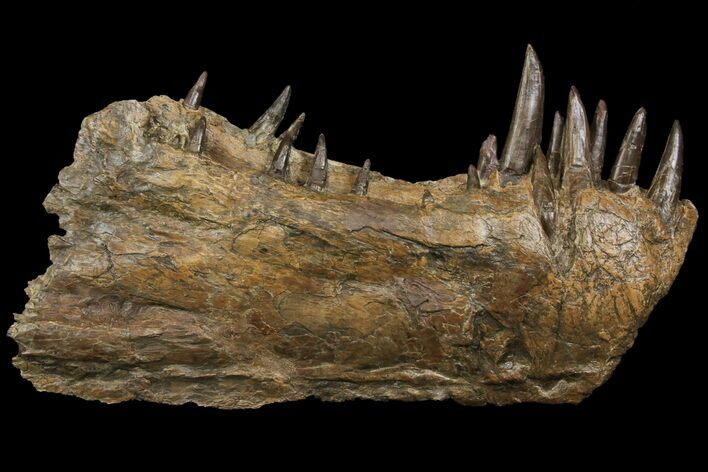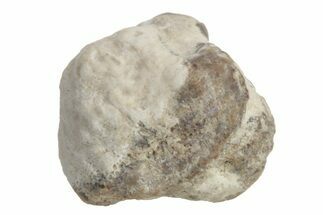This Specimen has been sold.
9.2" Xiphactinus Lower Jaws - All Original Teeth!
This is an awe inspiring, lower jaw (both sides) of the terror fish of the Cretaceous seas, Xiphactinus audax. The two sides of the lower jaw have been compressed together. It's 9.2" long and all of the teeth are original, not composites. It was collected recently from the Late Cretaceous, Niobrara Formation of Kansas. Very nice preservation and preparation with 15 large teeth visible, along with some smaller teeth. The only restoration is some minor crack fill.
Comes with a display stand.
Xiphactinus was a huge predatory fish that lived during the Late Cretaceous. It would have been a voracious predator, growing 15-20 feet long. When alive, the fish would have resembled a gargantuan fanged tarpon. It appeared in the BBC's Sea Monsters and National Geographic's Sea Monsters: A Prehistoric Adventure, and was labelled a "Prehistoric Terror" in the Animal Planet show River Monsters.
Comes with a display stand.
Xiphactinus was a huge predatory fish that lived during the Late Cretaceous. It would have been a voracious predator, growing 15-20 feet long. When alive, the fish would have resembled a gargantuan fanged tarpon. It appeared in the BBC's Sea Monsters and National Geographic's Sea Monsters: A Prehistoric Adventure, and was labelled a "Prehistoric Terror" in the Animal Planet show River Monsters.
The Smoky Hill Chalk Member of the Niobrara Chalk formation is a Cretaceous conservation Lagerstätte, or fossil-rich geological formation, known primarily for its exceptionally well-preserved marine reptiles. It outcrops in parts of northwest Kansas--its most famous localities for fossils--and in southeastern Nebraska. Large, well-known fossils excavated from the Smoky Hill Chalk include marine reptiles such as plesiosaurs, large bony fish such as Xiphactinus, mosasaurs, pterosaurs, and turtles.
SPECIES
Xiphactinus audax
LOCATION
Gove County, Kansas
FORMATION
Niobrara Formation
SIZE
9.2" long
CATEGORY
SUB CATEGORY
ITEM
#143495
We guarantee the authenticity of all of our specimens.
 Reviews
Reviews


















